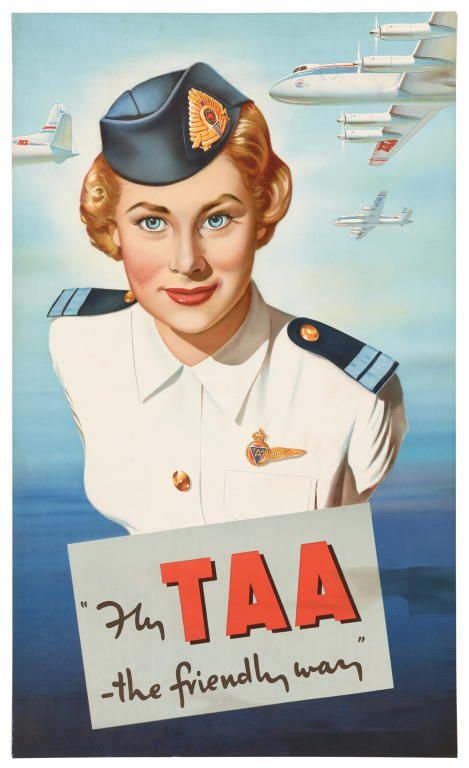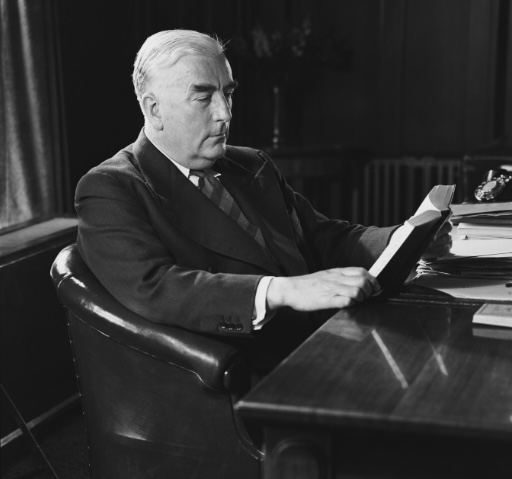On this day, 18 November 1952, the Civil Aviation Agreement Act receives royal assent, establishing what is referred to as the ‘two airlines policy’. The policy was simultaneously a liberal alternative to the Chifley Government’s attempt to nationalise domestic air travel, and also a significant regulatory restriction that epitomised Robert Menzies’s willingness to resort to state intervention where he thought it was necessary.
Before World War Two, Australia had a surprisingly vigorous and innovative domestic aviation market which featured sixteen airlines and ranked sixth in the world for scheduled air mileage. Much of the industry was naturally diverted towards the war effort, and as the conflict drew to a close the Chifley Government passed legislation establishing the Australian National Airlines Commission (ANAC), a government owned authority, which was intended to own and operate aircraft as a domestic monopoly. The justification behind the move was that competition had died off and the industry was already becoming increasingly centralised, though the government seemed to ignore the fact that it was its own wartime direction which had primarily caused this outcome. The people who had been involved in the flourishing pre-war market were naturally quite perturbed by the government’s course, and successfully challenged the monopolistic characteristic of the legislation in the High Court on the grounds that Section 92 of the Constitution insists that ‘trade, commerce, and intercourse among the States’ must be ‘absolutely free’.
Subsequently, the Coalition came to power in 1949 on a campaign which promised to rein in Labor’s socialist designs, a key aspect of which had been aviation (notably pioneering aviator Nancy Bird headed an organisation dubbed the ‘Australian Women’s Movement Against Socialisation’ which was formed in 1947). However, instead of fully deregulating the market, Robert Menzies determined to continue to operate the government-owned Trans Atlantic-Airlines, while allowing just one competitor, initially Australian National Airlines, which was later bought by Ansett. Some smaller airlines would survive the ‘two’ airlines policy, but they were not permitted to operate flights between major cities, and were instead confined to servicing smaller and more regional routes. Menzies justified the move in his second memoir The Measure of the Years, explaining:
‘the state of affairs when we came back into office was that interstate air traffic was “free for all”. Before long it was becoming evident that, if the highest standards in the fields of aircraft, maintenance, safety and service were to be maintained (and from the enormously increasing traffic it was essential that they should be), there should be some attempt at rationalization. This indeed was urgent, but the difficulties involved were obvious. I put in many hours studying all the relevant papers which my then Minister for Civil Aviation made available to me. We then conferred, and the matter went to Cabinet for decision. The result was what became known as the Two Airlines policy. This policy was based upon the view that a free-for-all would be contrary to the maintenance of the standards I have just referred to. We should therefore aim to secure a position in which there were two, and not more than two, operators of trunk-route airline services, each capable of the highest level of service and of effective competition with the other. Clearly the two airlines concerned would be T.A.A. and Ansett, the Government airline and the private airline.’
It is worth noting that Menzies had a strong personal reason to be fearful of anything that might potentially compromise safety standards, considering how many colleagues he had lost in the Canberra Air Disaster of 1940, but whether a duopoly really helped to achieve this outcome is open to debate. Menzies’s stance was naturally criticised by defenders of free enterprise, particularly as a single vested interest stood to benefit from being enshrined as the sole private operator. Meanwhile, despite the ‘moderate’ and arguably centre-left nature of what Menzies was doing, Opposition Leader H.V. Evatt still attacked the Civil Aviation Agreement by suggesting that its ‘primary aim was to weaken and undermine’ the TAA.
Although restrictions on Australia’s aviation industry were eventually lifted, the TAA sold off, and the two airline policy officially came to an end in 1990, its contours continue to shape domestic air travel to this day. Indeed, the system of having two major airlines complemented by regional specialists has proven so enduring, that it seems plausible that something approaching a duopoly may have emerged naturally through market forces even without the interference of the state.
Further Reading:
Robert Menzies, The Measure of the Years (London: Cassell, 1970).
‘Trans-Australia Airlines (TAA)’, Australian Aviation Hall of Fame, TAA (aahof.com.au)
Sign up to our newsletter
Sign up for our monthly newsletter to hear the latest news and receive information about upcoming events.


